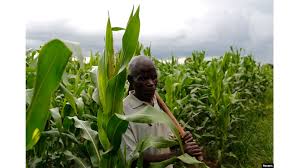Malawi is facing another maize shortage even as some traders have started exporting the staple food, leaving farmers selling their produce below government-recommended prices. This troubling development comes at a time when the country’s harvest is expected to fall short of national food needs, according to a new report by the International Food Policy Research Institute (IFPRI).
The report released recently, shows that despite the maize deficit, exports of the grain were recorded in several southern and border districts including Chikwawa, Mulanje, Phalombe, Machinga, Mangochi, and Chitipa.
The report states: “In contrast to the previous month when maize was consistently flowing into Malawi from all directions, May saw the emergence of maize export activity in a few southern districts.”
It further explains that while export margins—the difference between the local retail price and the export price—were lower than import margins, the act of exporting maize when the country is already struggling with shortages raises major concerns.
Government figures show that Malawi is expected to harvest around 2,962,620 metric tonnes of maize this season. However, this falls short of the national requirement, which is estimated at 3.5 million metric tonnes, leaving the country with a serious shortfall.
Yet, in the midst of this shortage, farmers are being forced to sell maize at prices far below the official farm gate price of K1,050 per kg, or K52,000 per 50kg bag. Reports indicate some farmers are selling as low as K707 per kg or K35,350 per bag, which is less than 70% of the recommended rate.
Mrs. Grace Mijiga Mhango, President of the Grain Traders Association of Malawi, confirmed the development in a media interview. She explained that informal exports are taking place mainly because local markets are currently inactive. Major buyers like the National Food Reserve Agency (NFRA) and Admarc Limited have not started purchasing maize.
“The industry is also not buying apart from a few who are buying below farm gate prices,” she said. “In the main cities, the highest price farmers can get is K900 per kg.”
She also noted that the foreign exchange rate is a strong factor encouraging informal exports. With the Malawian kwacha trading at over K4,000 to a US dollar, maize becomes one of the cheapest grains in the region. “Our maize is selling at nearly $176 per metric tonne, compared to an average of $250 elsewhere in the region,” Mhango said.
She emphasized that her association has proposed that the government should engage formal traders and use NFRA and Admarc’s idle storage spaces to stockpile maize. According to her, building up reserves of at least 300,000 to 500,000 metric tonnes is the only way to close Malawi’s food gap sustainably.
“But as long as our public storages are empty, maize shortages are here to stay,” she warned.
Minister of Agriculture Sam Kawale declined to comment on the matter, referring journalists to the Minister of Trade and Industry, who had not responded at the time of filing this report.
Meanwhile, Admarc Limited has disclosed that it has only managed to purchase 3,100 metric tonnes of maize since April, against its target of 20,000 metric tonnes so far. The state-owned grain buyer aims to procure 70,000 metric tonnes for the 2025 harvesting season.
Maize is not just any crop in Malawi. It is a staple that makes up over 53.7% of the Consumer Price Index (CPI), meaning it plays a major role in determining inflation. Any disruption in its supply immediately affects the cost of living, especially for the poorest households.
With farmers underpaid, buyers inactive, and exports on the rise despite the deficit, the situation calls for urgent government intervention to protect both food security and the livelihoods of local producers.
